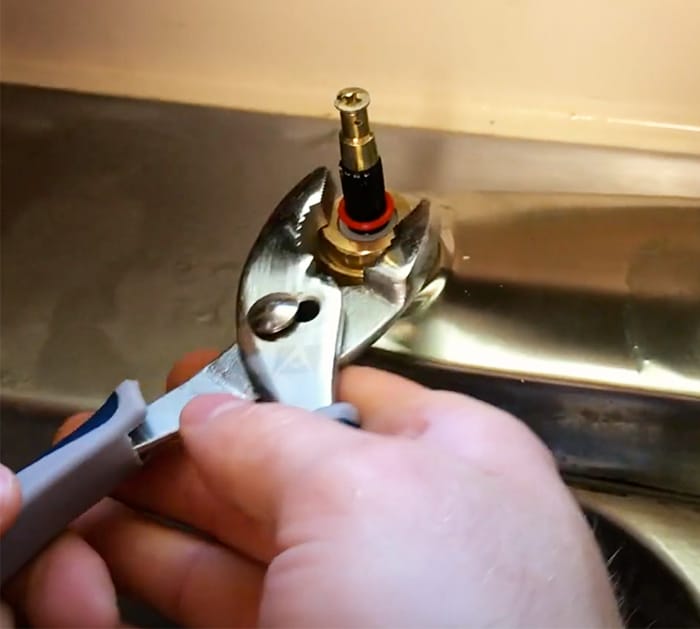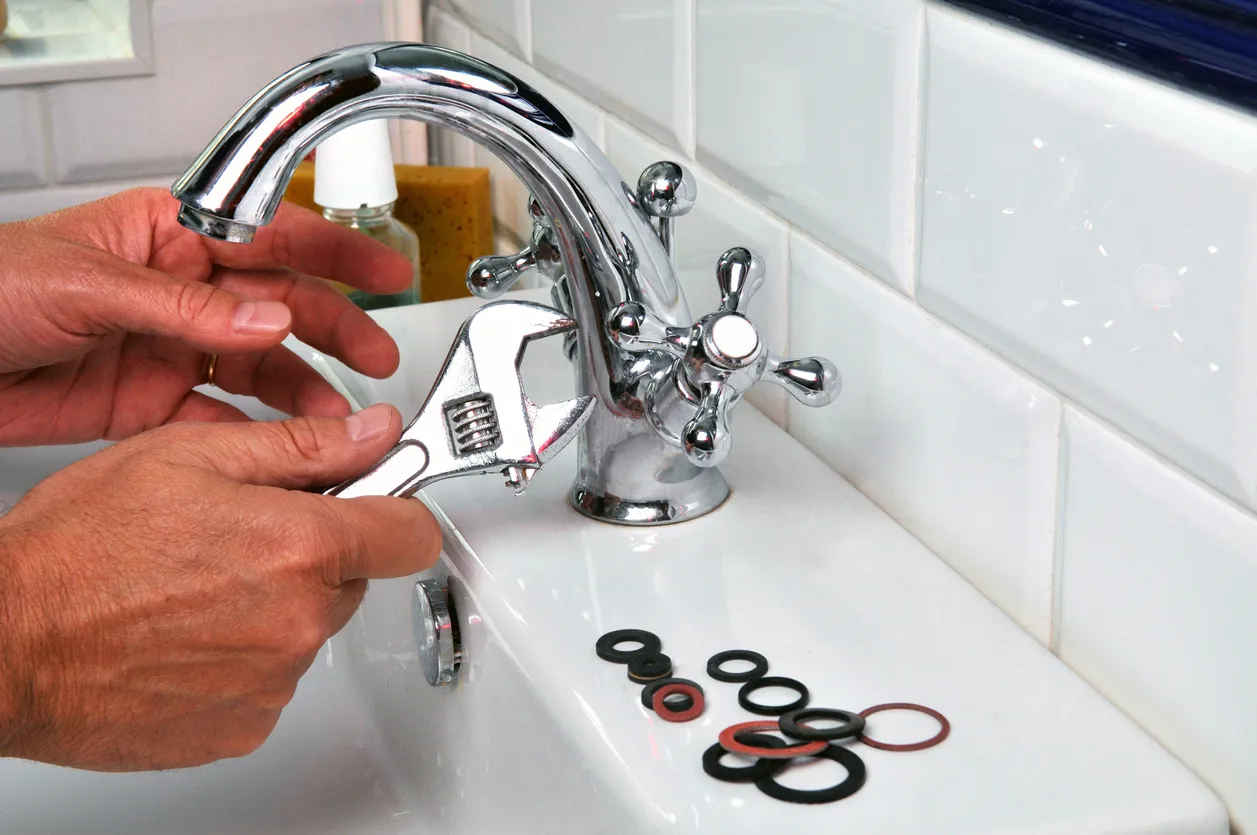Exploring the Significance of Correcting a Faulty Faucet
Exploring the Significance of Correcting a Faulty Faucet
Blog Article
We have unearthed the article pertaining to Should I Repair or Replace a Leaky Faucet? down the page on the internet and felt it made perfect sense to share it with you on this page.

Dripping faucets might feel like a minor aggravation, but their impact goes beyond simply the aggravation of the audio. From wasting water to incurring unneeded economic expenses and wellness threats, overlooking a trickling faucet can bring about different repercussions. In this short article, we'll look into why it's vital to address this typical household issue promptly and properly.
Wastefulness of Water
Ecological Influence
Dripping taps contribute significantly to water wastefulness. According to the Epa (EPA), a single tap leaking at one drip per secondly can lose more than 3,000 gallons of water each year. This not just strains water resources but likewise affects communities and wild animals dependent on them.
Financial Prices
Boosted Water Bills
Past the ecological effect, leaking taps can blow up water bills considerably. The accumulated wastefulness with time equates into higher utility expenses, which might have been avoided with prompt repair services.
Prospective Home Damage
Moreover, long term leaking can result in damage to fixtures and surfaces bordering the faucet. Water accumulation can cause discoloration, deterioration, and also structural concerns if left neglected, causing extra repair prices.
Health and wellness Concerns
Mold And Mildew and Mildew Growth
The consistent visibility of dampness from a leaking tap develops an ideal environment for mold and mold development. These fungis not just compromise interior air top quality however also posture health risks, specifically for people with respiratory problems or allergic reactions.
Waterborne Illness
Stagnant water in dripping taps can end up being a breeding ground for bacteria and other microorganisms, raising the risk of waterborne diseases. Contaminants such as Legionella bacteria grow in stationary water, possibly leading to serious ailments when consumed or inhaled.
Do it yourself vs. Specialist Repair service
Advantages and disadvantages of Do It Yourself Fixing
While some might try to fix a leaking tap themselves, DIY fixings include their own set of difficulties. Without correct expertise and devices, do it yourself attempts can exacerbate the issue or bring about incomplete fixings, prolonging the issue.
Advantages of Employing a Specialist Plumber
Hiring an expert plumber ensures that the underlying cause of the dripping tap is attended to successfully. Plumbings possess the know-how and tools to detect and fix faucet concerns efficiently, saving time and decreasing the risk of more damages.
Step-by-Step Overview to Repairing a Dripping Tap
Devices Needed
Prior to trying to repair a dripping tap, gather the needed tools, consisting of an adjustable wrench, screwdrivers, replacement parts (such as washing machines or cartridges), and plumber's tape.
Typical Faucet Issues and Their Solutions
Recognize the kind of tap and the certain problem creating the drip. Usual issues consist of worn-out washers, corroded valve seats, or malfunctioning O-rings. Refer to maker directions or online tutorials for step-by-step support on fixings.
Safety nets
Normal Upkeep Tips
To stop leaking faucets, perform routine upkeep such as cleansing aerators, inspecting for leaks, and replacing damaged parts without delay. Additionally, consider installing water-saving devices or upgrading to extra efficient fixtures.
Relevance of Prompt Services
Resolving dripping faucets as soon as they're noticed prevents additional water waste and possible damage, eventually conserving both water and cash in the long run.
Impact on Property Value
Perception of Well-Maintained Property
Keeping a building in good condition, including dealing with maintenance issues like leaking taps, enhances its regarded value and worth amongst possible purchasers or lessees.
Influence on Resale Worth
Properties with properly maintained plumbing fixtures, including taps, command higher resale values in the real estate market. Attending to leaking taps can contribute to a favorable impact throughout property assessments and arrangements.
Environmental Obligation
Individual Contribution to Conservation
Taking responsibility for taking care of leaking taps aligns with broader initiatives toward water conservation and environmental sustainability. Every person's actions jointly make a considerable effect on preserving precious resources.
Lasting Living Practices
By prioritizing timely repair services and taking on water-saving behaviors, people contribute to lasting living practices that profit both present and future generations.
Conclusion
Resolving a trickling tap goes beyond simple benefit; it's an important action toward conserving water, reducing economic costs, and safeguarding health and wellness and residential property. Whether with DIY repairs or expert support, doing something about it to take care of leaking faucets is a small yet impactful way to promote accountable stewardship of resources and contribute to a healthier, a lot more lasting future.
How to Fix a Dripping or Leaky Faucet
A leaking faucet is one of the most common problems that homeowners encounter, but it being commonplace doesn’t make it any less annoying. The constant drip drip drip of a leaking bathtub faucet, showerhead, or sink tap can disturb your home’s serenity. Left neglected, a dripping faucet can also result in higher water bills and discoloration or mold growth in your sink or plumbing fixtures.
Fortunately, you don’t have to be a trained plumber to know how to stop a dripping faucet. With some basic tools, replacement parts, and a little patience, leaky faucet repair is a breeze. In this article, we’ll explain what causes dripping faucets and how you can fix them.
What Causes a Leaking Faucet?
Kitchen and bathroom faucets come in all manner of designs, but most involve some combination of valves, O-rings, seals, and washers. The O-ring is usually the weakest link, but any one of these pieces can wear down over time. Heat, moisture, temperature fluctuations, minerals, mold, and movement can contribute to warping and corrosion, breaking the watertight seal. This just comes with the territory of being a homeowner. Everything is always subject to wear and tear, and some component parts of your appliances and fixtures need to be replaced on occasion. At least replacement O-rings are cheap!
More rarely, dripping faucets can be a symptom of excessively high water pressure. Were this the case in your home, you would probably notice that the leak is not isolated to one faucet. Water pressure issues are harder to resolve on your own. We recommend contacting a professional plumber if you suspect your water pressure is too high.
How to Fix a Dripping Faucet
Pipe wrench or monkey wrench Allen wrench set Screwdrivers Old towel or rag Shut off the water.
Before you do anything, you need to turn off the water to keep from drenching your kitchen or bathroom. You should find a valve under the sink and against the wall. Once you’ve turned this valve, try turning the faucet on to confirm that the water source has been cut off.
If you can’t locate your local valve for the faucet you’re working on, you can always shut off the water to the house at the main valve. Of course, this will prohibit anyone from using the sinks, showers, or toilets while you’re working on the faucet that’s giving you trouble.
Plug or block the drain.
You’ll be disassembling the faucet and removing some small bits of hardware. Plug the drain with a stopper or rag to avoid the possibility of a small screw falling into your P-trap.
Take apart the faucet assembly.
There are several varieties of kitchen and bathroom faucets, each with its own manner of assembly. For detailed instructions on how to disassemble your faucet, you can refer to the fixture’s manual or contact the manufacturer. If you know whether you have a ball, disc, cartridge, or compression faucet, you can find detailed schematics online.
In general, you need to begin by removing the faucet handles. You might notice a small screw that you’ll need to remove with a screwdriver or Allen wrench. If you don’t see any visible securing hardware, it’s likely hidden under a decorative cap that can be unscrewed or popped off with flathead screwdriver.
Remove each piece methodically, consulting a schematic when necessary. Take notes or arrange the pieces in such a way to make it easier to correctly reassemble the faucet later.
Remove the cartridge.
Once you’ve removed the handles and securing hardware, you should be able to remove the valve cartridge or stem. Some cartridges will slide right out. Other faucet models will require you to loosen a nut with a pipe wrench before you can remove the valve stem.
Examine the exposed hardware.
With the cartridge or stem removed, inspect the component parts. Check the rubber O-rings for wear and tear. Also examine the seat washer for corrosion or other damage. These pieces are usually the responsible parties for a dripping faucet, but it’s worth inspecting the other component parts while you have the faucet disassembled.
Find replacement parts.
Once you’ve identified which faucet component has failed, find an identical replacement. Your local hardware store should have O-rings, seat washers, and other standard components in stock. If you have a luxury or uncommon faucet, you may have to contact the manufacturer for a replacement part.
It’s a good idea to take your old parts with you to the hardware store so you can compare them with the store’s inventory and be sure you’re purchasing the correct replacement.
Reassemble the faucet.
With your new parts in hand, reconstruct the faucet and handles. Don’t be tempted to overtighten screws or nuts. You might think this could create a better seal, but it can instead damage or bend a delicate part of the assembly and create a new problem for you.
Turn on the water and test the faucet.
The only thing left to do is test your work. Unplug the sink, turn the water back on, and try the faucet. Congratulate yourself on a job well done!
https://www.libertyhomeguard.com/how-to-fix-a-dripping-or-leaky-faucet/

Hopefully you enjoyed our article about . Thank you for taking a few minutes to browse our piece of content. Be sure to set aside a second to promote this blog post if you enjoyed it. I treasure your readership.
Report this page